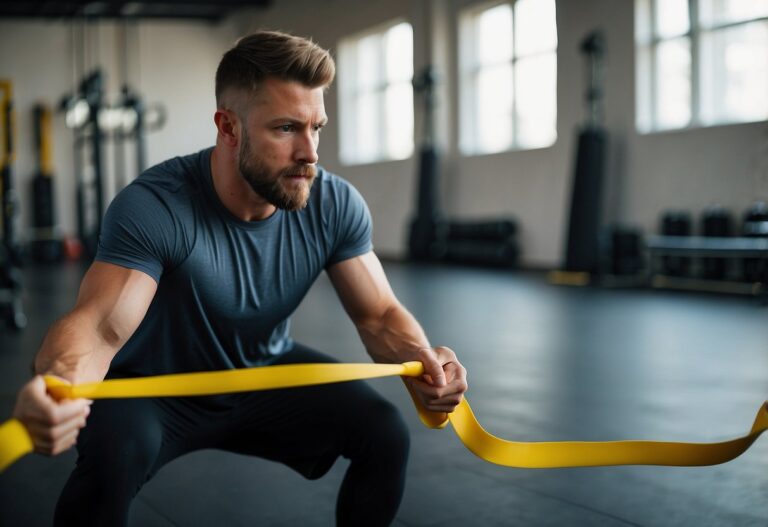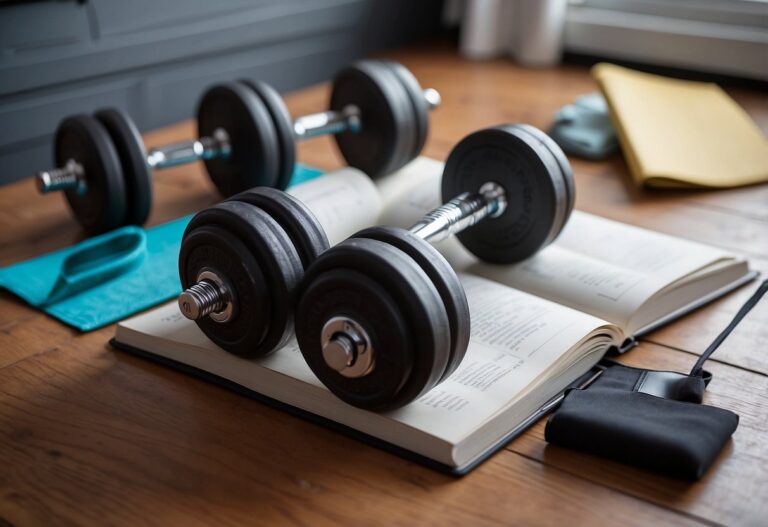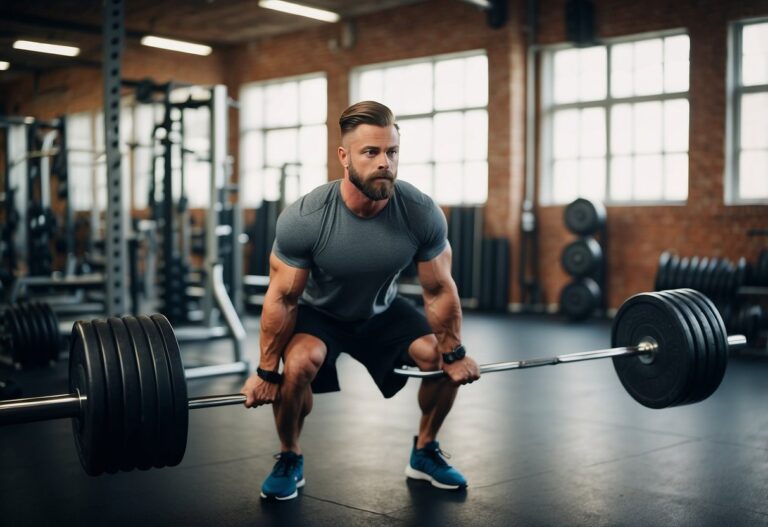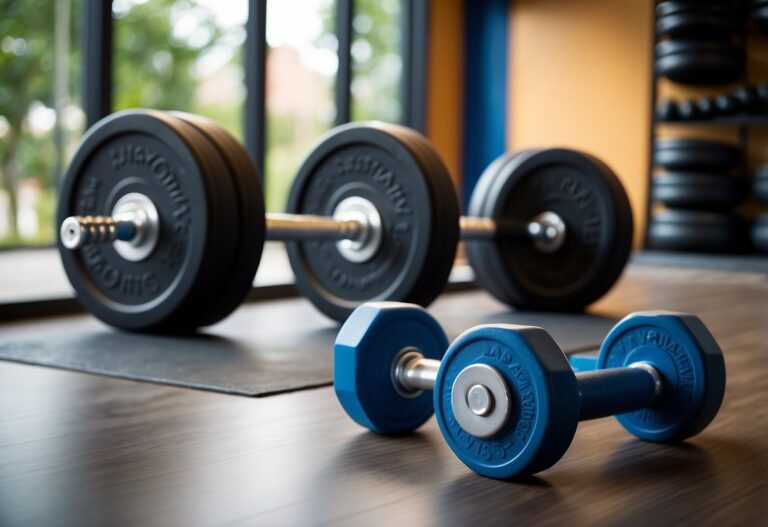Getting the right workout routine is crucial for anyone looking to up their volleyball game. Whether you’re an aspiring pro or just want to perform better on your local team, incorporating specific exercises into your training can make a significant difference. Why is this important? A tailored workout plan not only enhances your athletic performance but also helps prevent injuries, ensuring you can play at your best more consistently.

Working on your physical conditioning can directly impact how you play on the court. Exercises that improve strength, agility, and stamina are vital for every volleyball player. As you adopt these routines, you’ll notice improvements in your jumps, dives, and overall endurance. Dive into the realm of volleyball fitness with confidence, knowing these tips will support your journey towards becoming a stronger, more efficient player.
Dynamic Warm-Up
Before you start your volleyball workout, a dynamic warm-up is essential. This type of warm-up involves active movements that help increase your heart rate and blood flow.
Begin with high knees. This simple exercise gets your legs moving and prepares them for more intense activity. Perform sets of high knees both forwards and laterally.
Next, try high knee hugs. Pull one knee to your chest while balancing on your other leg. This helps with both balance and flexibility.
Incorporate plyometric activities to wake up your lower legs. Moves like jumping and bounding can get your muscles ready for explosive action.
Finish with dynamic stretches. These stretches keep you moving while you stretch, improving your range of motion. For example, perform arm circles or leg swings.
Make sure to pick exercises you enjoy and mix them up regularly to keep your warm-up routine fresh and engaging. For more ideas, you can check out 20 dynamic volleyball warmups to add variety to your sessions.
Warm-ups not only prepare you physically but also get you mentally ready to play. So, make them a regular part of your volleyball routine and notice the difference in your performance.
Core Strengthening
Strengthening your core is crucial for volleyball players. A strong core helps you jump higher, move faster, and stay balanced during gameplay. One great exercise is the side plank. Lie on your side with your forearm on the ground, stack your feet, and lift your hips. Hold this position to work on your obliques.
Another effective move is the plank. Start in a push-up position, then lower onto your forearms, keeping your body straight. This exercise enhances your stability and strengthens your abdominal muscles.
Medicine ball rotations are also helpful. Stand with your feet shoulder-width apart, knees bent. Rotate away from the wall, then throw the ball towards it. This movement improves your rotational power, essential for striking and serving.
Plyometric Drills
Plyometric exercises are fantastic for improving your explosive power on the volleyball court. These drills help you jump higher and move faster.
Depth Jumps are highly effective. You jump off a box, absorb the impact, and then explode upwards. This builds strength and agility. Try using an 8 to 24-inch platform for this drill.
Continuous Jumps involve jumping over hurdles without pausing. Focus on keeping your torso tall and cycling your arms. This drill increases your stamina and speed.
Remember to push your feet into the ground and engage your core during these exercises to maximise results. Warm up properly to avoid injury and ensure you’re comfortable with the movements.
Sprint Intervals
Sprint intervals are a key component of volleyball training. They improve your speed and agility, which are crucial for quick movements on the court. Try sprinting for 20 to 50 yards at a high intensity. This type of training helps you mimic the start-stop nature of volleyball.
Take short rest periods between sprints. You could walk back to the starting point or rest for 10-20 seconds. This ensures you’re ready for the next sprint.
To add variety, consider sprinting around cones in a set pattern. This can enhance your ability to change direction quickly, just like you do in a game.
Agility Ladder Exercises
Incorporating agility ladder exercises into your training can greatly improve your performance on the court.
Start with Single Leg Hops. Stand on one foot and hop sideways through the ladder. This drill enhances balance, coordination, and lateral quickness.
Two In, Two Out is another effective drill. Straddle the ladder, step 1-2 into the ladder, then step 1-2 out as you move down. This improves footwork and speed.
Using agility ladders in your warm-up increases blood flow to your muscles. It helps in preparing your body for the game.
Always focus on controlled movements to ensure effectiveness and avoid injury.
Resistance Band Training
Resistance bands can be a game-changer for your volleyball training. They are versatile and can target specific muscle groups.
Using bands helps improve your strength and explosiveness, especially in your legs and core. For example, resistance bands are great for lateral shuffles. Place the band around your ankles and shuffle side to side. This workout increases the resistance on your leg muscles.
If you’re looking to improve your jumping power, try band-assisted squats. Attach a band to a sturdy anchor above you and perform squats. The band assists your upward motion, making it easier to focus on explosive jumps.
Another useful exercise is the X-band walk. Done correctly, it strengthens the hips and glutes. Step inside the band, cross it into an “X” pattern, and walk sideways. This exercise is great for improving lateral stability.
Shoulder strength is crucial for volleyball players. Using bands for shoulder presses can help. Stand on the band and press upwards, mimicking a serve or spike motion. This builds strength without needing heavy weights.
You can find more examples of specific exercises here and here. Tailor these band exercises to fit into your routine, and you’ll notice improvements in your game quickly.
Medicine Ball Throws
Medicine ball throws are fantastic for volleyball players to boost power and accuracy in their hits. This simple exercise can be done almost anywhere with minimal equipment.
Stand facing a wall with your feet shoulder-width apart. Hold the medicine ball at chest height with both hands. Throw the ball against the wall with as much force as you can muster, then catch it on the rebound.
This drill not only strengthens your arms and shoulders but also engages your core, making your hits more powerful. It simulates the action of spiking or serving in a game.
Practising this exercise regularly improves your overall performance on the court. Try integrating it into your routine to see noticeable results in your hitting power. For more detailed instructions, check out this guide on medicine ball exercises for volleyball.
Vertical Jump Training
Increasing your vertical jump can make a big difference in your volleyball performance. To start, you need to measure your current vertical. Stand next to a tall wall with a Post-It in hand, jump, and stick it as high as you can. This will give you a baseline.
Try incorporating specific jump exercises into your routine. You can use exercises like squat jumps and box jumps, which are very effective. These exercises help build the muscles you need for a powerful jump.
It’s important to strengthen your legs and core. Exercises like lunges and planks can help. A strong core stabilises your body and enhances your jump height.
Lastly, don’t forget about plyometric training. This includes activities like bounding and hopping, which can improve your explosive power, making you jump higher on the court.
For more detailed exercises, you can refer to this guide on vertical jump exercises.
HIIT Sessions

High-Intensity Interval Training (HIIT) is great for boosting your stamina and power on the court.
For a basic HIIT drill, try combining jump squats with brief rest periods. Do jump squats for 30 seconds, rest for 10 seconds, and repeat.
Another effective exercise includes burpees. Perform these for 30 seconds, then take a 10-second break before starting again.
Lastly, don’t forget to add some agility drills like cone drills to keep your movement sharp and quick.
Yoga and Flexibility
Yoga is fantastic for volleyball players. It helps improve flexibility, which is essential when you need to stretch for a dig or block a spike. Regular yoga sessions can make your muscles more elastic and ready for those sudden movements on the court.
Dancer pose is a great choice for you. It boosts hip mobility and balance. If you often feel tightness in your hips, this pose will help you stretch them out.
Downward dog is another useful pose. It stretches various muscles like your hamstrings and shoulders, making it easier for you to dive and jump effectively.
Adding yoga to your routine can also reduce muscle tightness and improve balance. This can help prevent injuries and keep you playing longer.
Importance of Strength Training
Strength training is essential for volleyball players because it enhances performance, builds power, and reduces injury risk. By focusing on specific muscle groups, you can improve your agility and overall game efficiency.
Core Exercises
Strong core muscles are crucial for volleyball players. Your core helps maintain stability and balance when you jump, spike, or serve. Planks are an excellent starting point. Hold a plank position for 30 seconds, working up to 2 minutes. This exercise strengthens your abs, lower back, and shoulders.
Russian twists are also beneficial. Sit on the floor with your knees bent, leaning back slightly. Hold a weight and twist your torso from side to side. This move targets your obliques, enhancing your rotational power.
Don’t forget leg raises. Lie flat on your back and lift your legs, keeping them straight. This exercise focuses on your lower abs, crucial for powerful jumps and quick movements.
Lower Body Workouts
Your lower body strength is vital for explosive movements needed in volleyball. Squats are a key exercise. Start with a basic bodyweight squat. Focus on form: keep your back straight, knees behind your toes, and squat until your thighs are parallel to the ground. This move strengthens your quads, hamstrings, and glutes.
Lunges are another great workout. Step forward with one leg, lowering your hips until both knees are bent at 90 degrees. This exercise improves balance and targets similar muscles as squats but adds a stability challenge.
Lastly, incorporate calf raises into your routine. Stand on a step with just the balls of your feet and raise your heels as high as possible before lowering them. This targets your calves, crucial for jumping and sprinting on the court.
By targeting these muscles through varied exercises, you can enhance your on-court performance and resilience.
Cardiovascular Conditioning

Cardiovascular conditioning is essential for volleyball players to maintain high energy levels and quickly recover between plays. Below, you’ll find effective methods to improve your cardiovascular fitness for volleyball.
Interval Training
Interval training is a fantastic way to replicate the stop-and-start nature of volleyball. It involves alternating between periods of intense activity and rest or low-intensity exercise. For example, you can perform interval sprints by sprinting for 30 seconds and then walking or jogging for 60 seconds. Repeat this cycle for about 10-15 minutes.
Benefits of interval training include improved cardiovascular endurance and better recovery times between plays. Additionally, it can enhance your agility and speed on the court. Including movements that mimic game situations, like sprinting to touch a cone and then sprinting back, can make your training more effective.
Incorporating exercises like hurdle hops and jump squats for a few seconds followed by short rests can also boost your endurance. These plyometric exercises can improve your explosive power, crucial for jumps and quick movements in volleyball.
Remember to keep your training sessions varied and engaging to avoid monotony and stay motivated.
Recovery and Injury Prevention
Recovering properly and preventing injuries are essential for staying at the top of your game in volleyball. Key strategies include effective stretching techniques and maintaining proper nutrition.
Stretching Techniques
Stretching is crucial to keep muscles flexible and ready for action. Before playing, you should focus on dynamic stretches to prepare your body for the intense movements on the court. Examples include:
- Leg swings: Moving your legs side to side or front to back.
- Arm circles: Rotating your arms in circular motions gradually getting larger.
After a game, use static stretches to cool down and prevent soreness. These might include:
- Hamstring stretch: Sit with one leg extended and reach for your toes.
- Quadriceps stretch: Stand on one leg and pull the other foot towards your glutes.
Incorporating these stretches into your routine can significantly lower the risk of muscle injuries and promote quicker recovery.
Proper Nutrition for Recovery
Nutrition plays a huge role in how well you recover after a game or workout. Eating the right foods helps repair muscles and replenish energy stores. Here are some tips:
- Protein: It’s vital for muscle repair. Include lean meats, eggs, or plant-based proteins like beans and tofu.
- Carbohydrates: They provide the energy needed for recovery. Think whole grains, fruits, and vegetables.
- Hydration: Staying hydrated is key. Drink plenty of water and consider sports drinks for electrolytes if you’ve had a particularly intense session.
Not following a proper diet can lead to longer recovery times and increase your risk of injuries. Always aim for a balanced diet with varied nutrients to keep your body in top condition.







